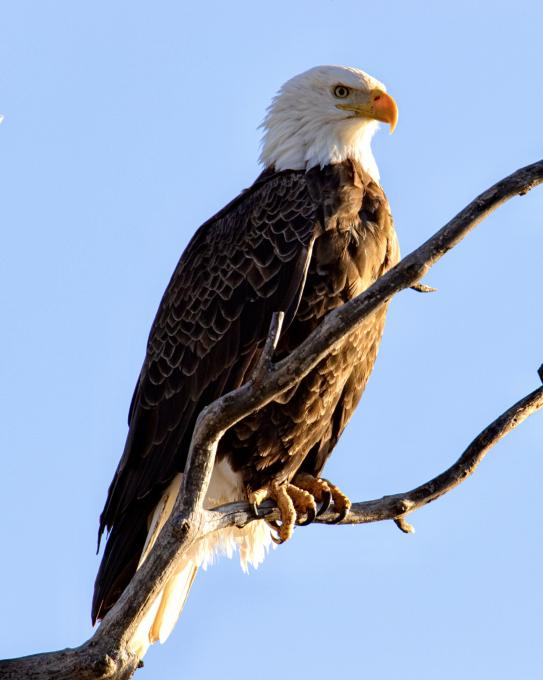The Cornell Lab Bird Academy › Discussion Groups › Bird Photography with Melissa Groo › Practice Crafting Great Bird Photos
-

 I learned shallow focus works better in some circumstances than others. The birds gathering for a turn near our feeders give me the luxury to set up a blurred background without blurring the bird!
I learned shallow focus works better in some circumstances than others. The birds gathering for a turn near our feeders give me the luxury to set up a blurred background without blurring the bird!
-
Rule following: the Pileated Woodpecker obeys the rule of thirds and is also in focus against a blurred background like the Turkey Vulture. Rule bending: for the Mute Swans, we used f/5 so the farther one is still barely in focus, but they are basically centered rather than at a cross points, which gives them space to travel.



-

-

-
These are unique photos for me. Despite very bad in quality I found out that they have an illusion effect due to light. Can you tell which way they are headed?


-
The first thing when I follow or break the rules of composition is that I consciously spend more time composing the shot and thinking about what I see - then make a decision - and take the shot. In the picture of the cardinal, I like the cardinal centered (breaking the rules) with the strong color statement and the algae covered tree behind surrounded by brown and white in each direction. It seems to draw the eye away from the feeder and to the bird. The heavy red seems to balance the color palatte. Had the cardinal been placed according to the rule of thirds the emphasis would have been on the feeder and the picture would seem to be off balance. I also see the eye sparkle and the bird eating - not just resting.
 With the Merlin, I like the position of the Merlin facing out from the top of the only
With the Merlin, I like the position of the Merlin facing out from the top of the only tree with the head turned slightly seeming to scan the area to locate a small bird for dinner. Perhaps a slightly higher position would be even better. I think there is certainly room for improvement in the shot but the eye twinkle is there slightly and I like the artistic appearance of the small limbs surrounding the bird making the setting almost show the violence this small bird is capable of bestowing. The background grey - while realistic - is lacking.
tree with the head turned slightly seeming to scan the area to locate a small bird for dinner. Perhaps a slightly higher position would be even better. I think there is certainly room for improvement in the shot but the eye twinkle is there slightly and I like the artistic appearance of the small limbs surrounding the bird making the setting almost show the violence this small bird is capable of bestowing. The background grey - while realistic - is lacking. -
Here is a Rock Pigeon perched on wire with front light but at an angle.
 In the following photo the shadow cast by leaves on the breast part of Rose-ringed Parakeet makes it artistic as if a body art
In the following photo the shadow cast by leaves on the breast part of Rose-ringed Parakeet makes it artistic as if a body art
 In the following photo the front-top light details the face and breast of this White-throated Fantail
In the following photo the front-top light details the face and breast of this White-throated Fantail

-
 This broke a few rules. The light was harsh and late morning, but the dramatic contrasted black and white of the snow geese is emphasized by the light. In some situations the rule of thirds is difficult to use. The blur is from trees branches in the foreground, which was unavoidable at the time from in the woods.
This broke a few rules. The light was harsh and late morning, but the dramatic contrasted black and white of the snow geese is emphasized by the light. In some situations the rule of thirds is difficult to use. The blur is from trees branches in the foreground, which was unavoidable at the time from in the woods.
 This one had top lighting of the wild turkey and no glint in the eye, but the expression seems to make up for some of the broken rules.
This one had top lighting of the wild turkey and no glint in the eye, but the expression seems to make up for some of the broken rules.
 Getting close to the dark-eyed junk makes up for some of the top lighting and almost makes it look like back lighting. The breast of the bird seems to work as the contrasting background for the beak.
Getting close to the dark-eyed junk makes up for some of the top lighting and almost makes it look like back lighting. The breast of the bird seems to work as the contrasting background for the beak.
-
 Because these two were looking in opposite directions, I chose to center them in the composition. This choice gives each bird some gazing distance within the frame.
Because these two were looking in opposite directions, I chose to center them in the composition. This choice gives each bird some gazing distance within the frame. -
I made a point of backlighting these photos since I usually do not think about this lighting option. I liked the effect.


-
One last post on the topic same photo but cropped differently. In the first photo I filled the frame so broke some rules, no space in front of him, photo was taken directly in front of him so he appears as so..flattened and lacking some depth, doesn't adhere to rule of thirds.. second photo respects the classic bird photo a little more....he has space in front of him, adheres more to rule of thirds etc. It would have been better without the cluttered background still i got interested in this shot because it reveals something interesting .. the anatomy of his tongue.


-
I like seeing birds eating or doing more than simply sitting, so I like your photo number 2 the best.
-
-
I tried doing something a little different on the first photo.... American Robin in a stand of Hawthorn trees December 7th, 2020 ..photo is in the rule of thirds but not a typical bird photo as he is not facing the camera. I wanted to see what would turn out with him facing away from me. I like the hues in the photo of the red Hawthorn berries in combination with the grey on his feathers and his layered feather structure all blurred as in classic bird photos....but as i said with a difference. The second photo of an Eastern Kingbird was taken somewhat as an afterthought. I was leaving a marsh and I noticed him preening in close proximity to me. I figured oh what the heck, "Take one more shot." It has turned into one of my favourite shots .. I like the quality of the catch light (a term I now know from taking this course) up in the corner of his eye, photos is sharp, nice blurred background and it is a portrayal of bird behaviour showing as well great detail of his feathers. There is a sense of vunerability about him as well .. not sure if i am describing it correctly but i just feel something special about this photo.


-
Nice photo of the kingbird in action preening.
-
-
I got lucky with this image. I had the opportunity for a quick shot of this pair of Cedar Waxwings, but noticed that if I stepped just a little to the left there was a deep shadow in the background, which is what I was looking for. I took the quick shot to make sure I had a photo then stepped to the left and recomposed for the better shot. Nikon D500. f/5.6. 1/800. ISO 2500. I chose to center subjects to achieve symmetry and illusion of mirror image.
 i
i -
Very nice image, Dennis. What was the focal length ? Really clean background; no noise. Did you crop the image ?
-
Mirror look for these beautiful birds, nice idea.
-
-
 This image is with a super-telephoto at max zoom, 1/500th, ISO 250, f6.3. I find the sinuous neck pose quite visually compelling. The original image is about 9000x6000, with crisp feather detail that is lost with this downsampled upload.
This image is with a super-telephoto at max zoom, 1/500th, ISO 250, f6.3. I find the sinuous neck pose quite visually compelling. The original image is about 9000x6000, with crisp feather detail that is lost with this downsampled upload. -
Has anyone used a Field Scope instead of a telescopic lens? It is supposed to attach to a camera and an I-phone using adapters.
-


 I took all three of these photos at the leather stocking trail in NY and especially like the Golden crowned kinglet, because of how close I got to the bird, with only a 250mm zoom lens! The thrush is also one of my favorite because it is following the rule of thirds.
I took all three of these photos at the leather stocking trail in NY and especially like the Golden crowned kinglet, because of how close I got to the bird, with only a 250mm zoom lens! The thrush is also one of my favorite because it is following the rule of thirds. -


 For this assignment I really concentrated on using my manual settings while trying to get the "classic" bird photo using the rule of 3rds. For the Song Sparrow I really liked how the branch in the foreground as well as the background were blurred while the bird itself was still in focus. I spent a lot of time with this female Ruby-throated Hummingbird as she darted back and forth from the feeder to this tree and like how she's wrapped around the tiny branch. I love how the Gray Catbird really stands out from the creamy green background.
For this assignment I really concentrated on using my manual settings while trying to get the "classic" bird photo using the rule of 3rds. For the Song Sparrow I really liked how the branch in the foreground as well as the background were blurred while the bird itself was still in focus. I spent a lot of time with this female Ruby-throated Hummingbird as she darted back and forth from the feeder to this tree and like how she's wrapped around the tiny branch. I love how the Gray Catbird really stands out from the creamy green background. -
Hummingbird photo is great! Seeing them land and stay a second is fantastic to photo!
-
-
 A wide open aperture and high speed created a nicely blurred background while the dew is still visible on the morning grass. Brewers blackbird
A wide open aperture and high speed created a nicely blurred background while the dew is still visible on the morning grass. Brewers blackbird -

 I took these Rufous Hummingbird photos with side lighting. I especially like the way that the fascia frame the bird.
I took these Rufous Hummingbird photos with side lighting. I especially like the way that the fascia frame the bird. -


 The top photo of a yellow-crowned heron (I think) is backlighting following the rule of thirds. The middle photo of the Tree Swallow is side lighting and follows through rule of thirds. Finally, Snowy Egret is front lighting.
The top photo of a yellow-crowned heron (I think) is backlighting following the rule of thirds. The middle photo of the Tree Swallow is side lighting and follows through rule of thirds. Finally, Snowy Egret is front lighting. -
Melissa's photo on the side-lit Eastern Towhee: Why did you shoot at F/7.1 instead of keeping it wide open and dropping down the ISO? Wouldn't that have created a better quality image (less noise from higher ISO)? I was just curious because I always try to shoot wide open unless I want to increase depth of field to capture multiple birds or for maybe a habitat shot.
-
I spent a long time (45 minutes) trying to capture the spirit of this Black Phoebe - this is the only photo of many that follows the "rules". I also was getting used to my Canon Powershoot HD50SX so there were some technical issues. But by using large aperture , I love the shallow depth of the field and how it highlights the bird. The Snow Egret violates the rule of thirds but it still isn't a bad picture!


-
Used the Rule of Thirds in the first picture and in the last picture of the Canada Goose I broke the Rule of Thirds and the Goose is right in the middle of the picture. I really like both pictures, so I could go with using the Rule of Thirds but also breaking it when necessary. The middle picture of the Canada Goose is showing shallow depth of field when I was playing around with my aperture settings. Loved the assignment.



-
Looks like the goose loved working with you, nice sharp photos and approaches to the shot.
-
-
While I lived in Florida for some time, I've never been able to capture decent images of Osprey...until one appeared in my backyard to munch on a tasty fish caught from our lake. During the photo encounter a Bald Eagle and Hawk circled the Osprey watching for an opportunity to swoop down and steal the fish. But the Osprey would not have it and spread its wings around the fish to hide it from any aerial attacks. Both images are using the rule of thirds.


-
Wow! That is such beautiful close ups. Amazing photos.
-
@Isabelle Thanks so much Isabelle! It was truly a magical encounter.
-
I am in awe of these photos! Amazing. I see osprey in my area, but they are always high up in the trees. wow!
-
When I lived in Maine, I once saw an osprey dive and come up with a fish. Immediately an eagle was on it, trying to get it to drop the fish. Watched through binoculars for a few minutes until the eagle gave up. Apparently, they're pretty lazy.
-
Great shot, sharp, exposure , blurred background etc. great moment for you to have caught.
-
Love the eyes in the first photo...intensity caught!
-
-
Dickcissel with backlighting
 Barn swallow with subject in focus and background blurred
Barn swallow with subject in focus and background blurred
 Bald eagle side lighting
Bald eagle side lighting

-
Great images and really cool to see the different types of lighting.
-
That Dickcissel photo is just gorgeous! Bravo!
-
Read More:
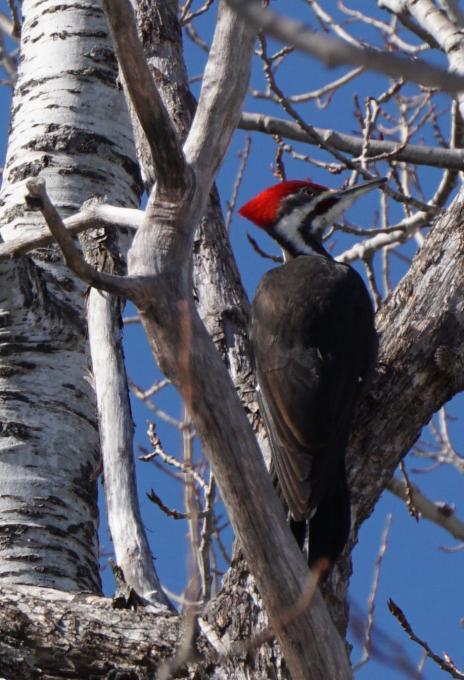
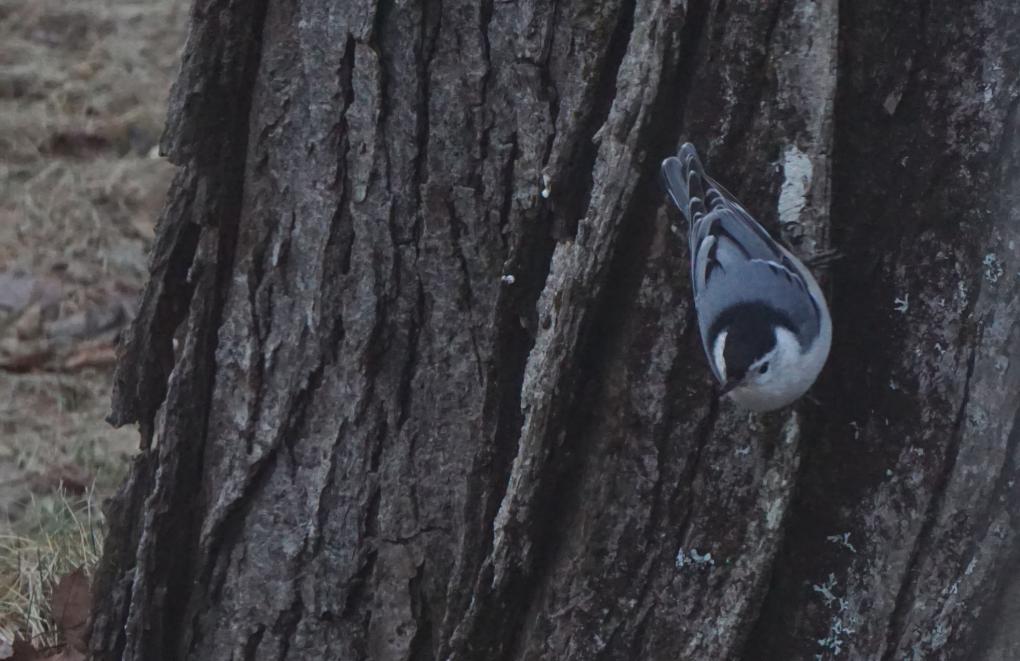 I learned shallow focus works better in some circumstances than others. The birds gathering for a turn near our feeders give me the luxury to set up a blurred background without blurring the bird!
I learned shallow focus works better in some circumstances than others. The birds gathering for a turn near our feeders give me the luxury to set up a blurred background without blurring the bird!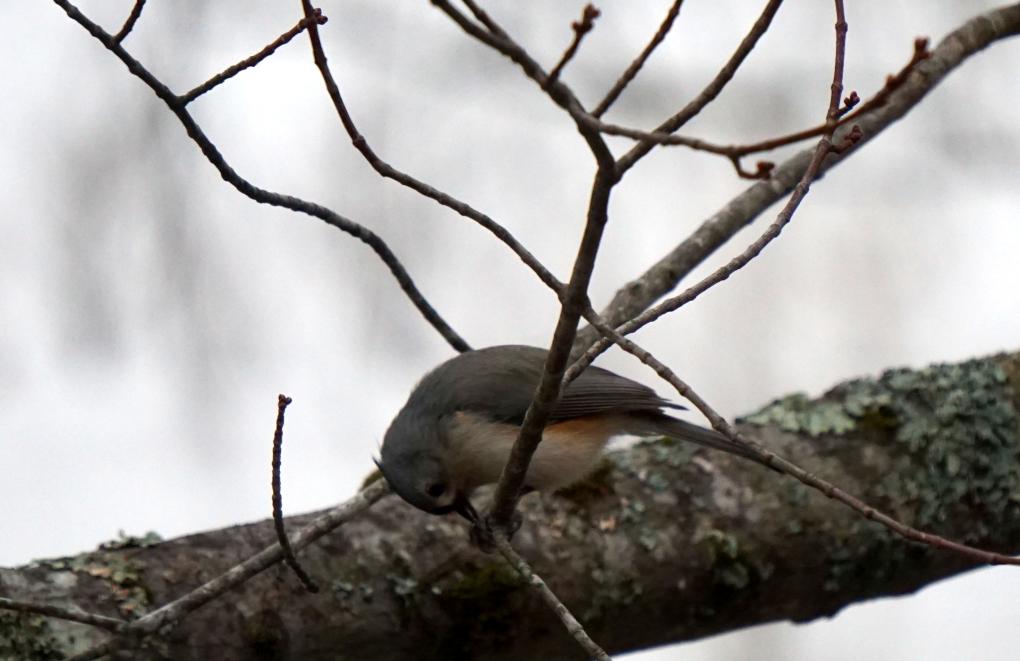
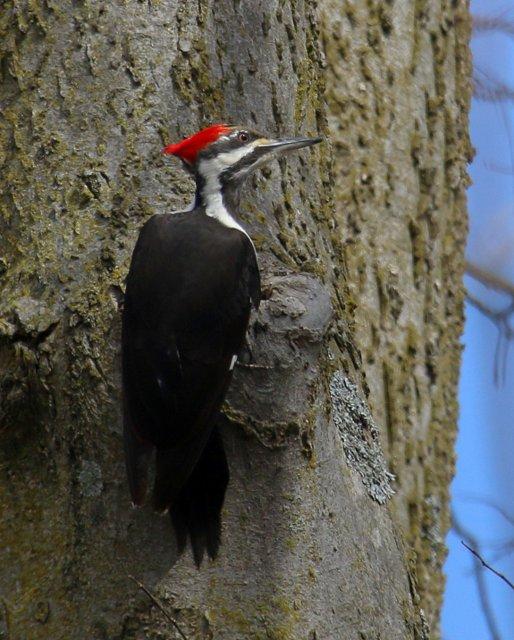
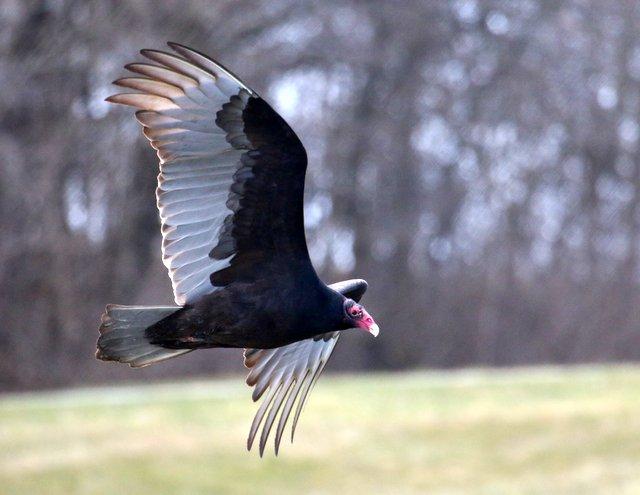
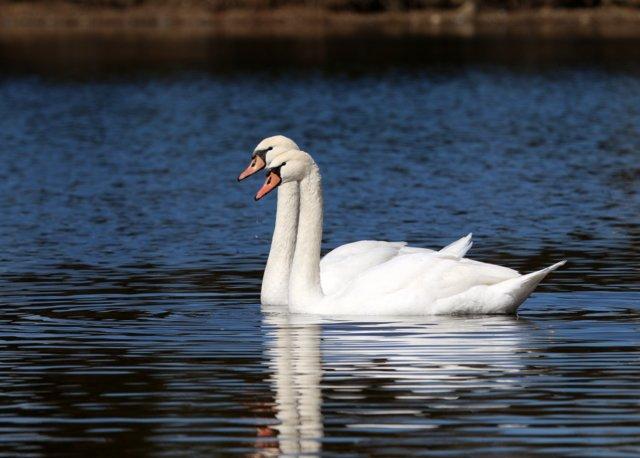
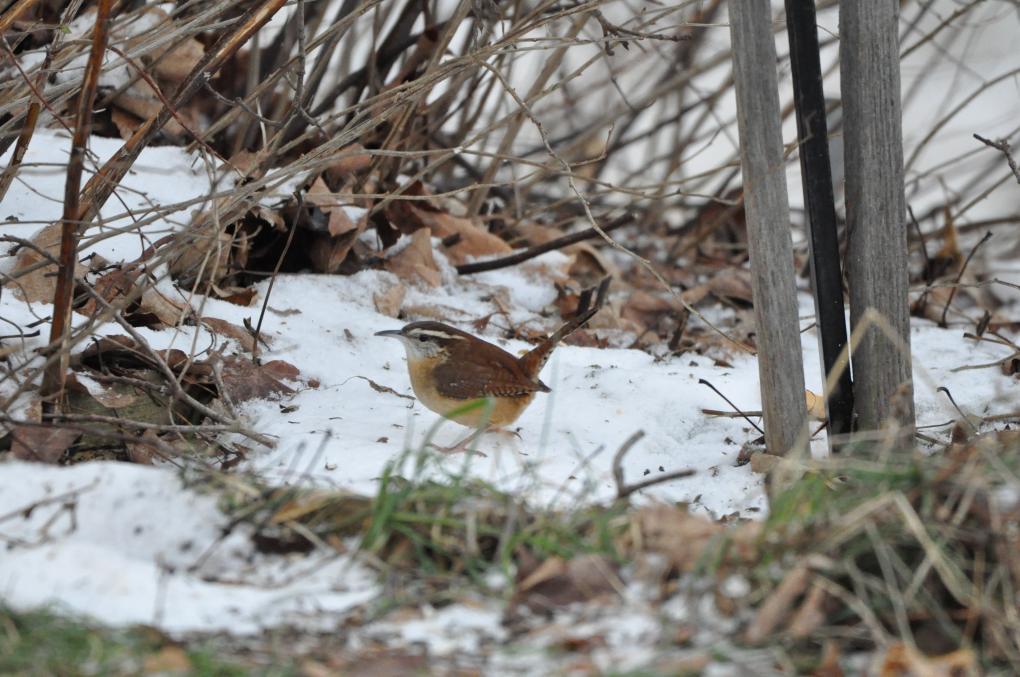
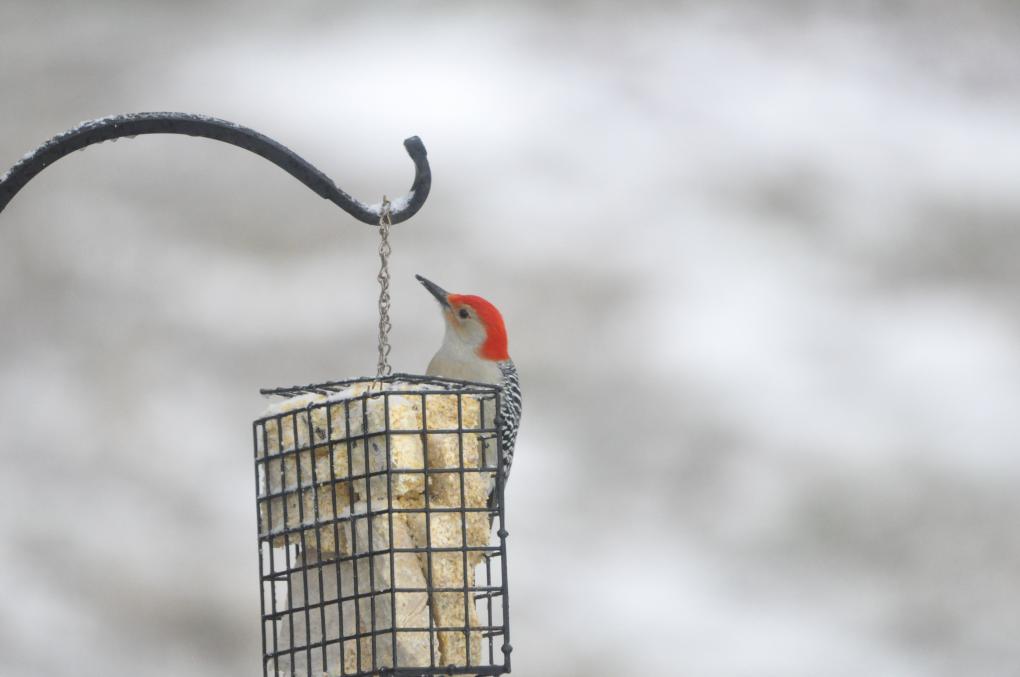
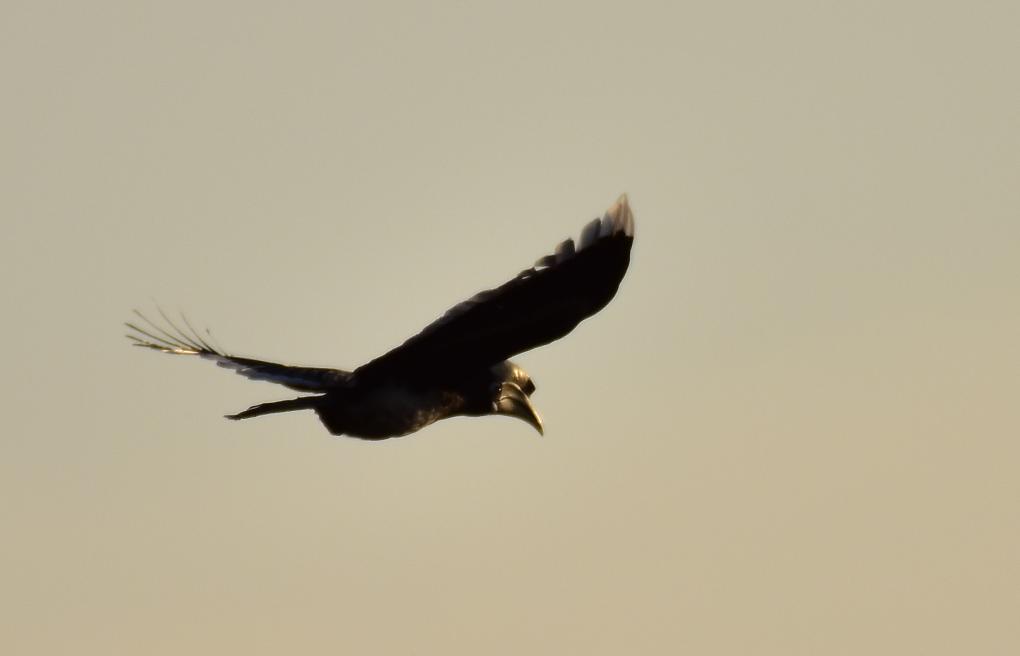
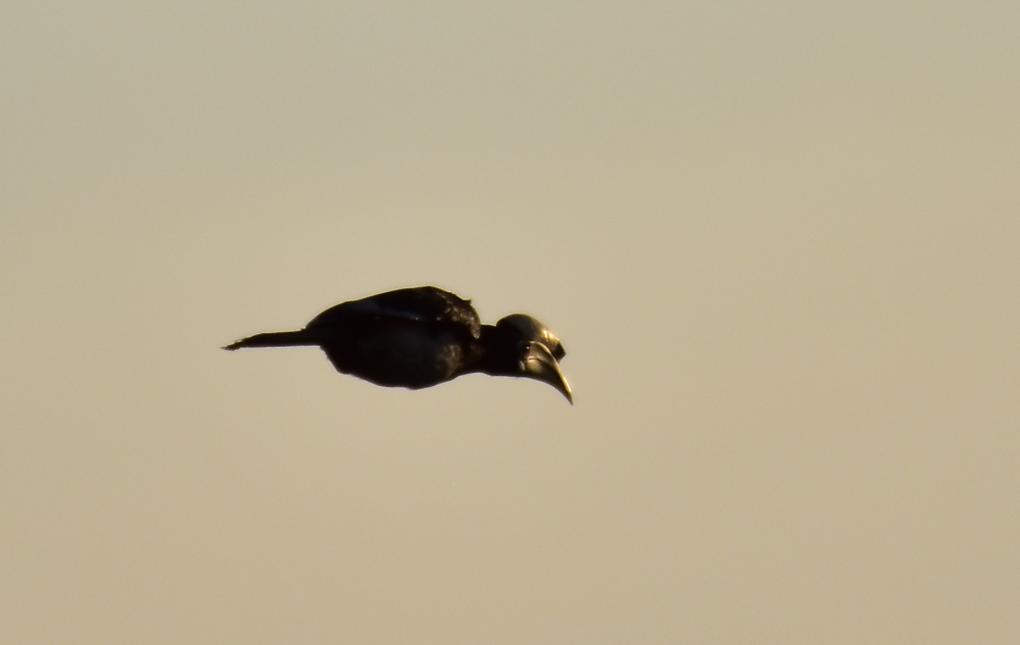
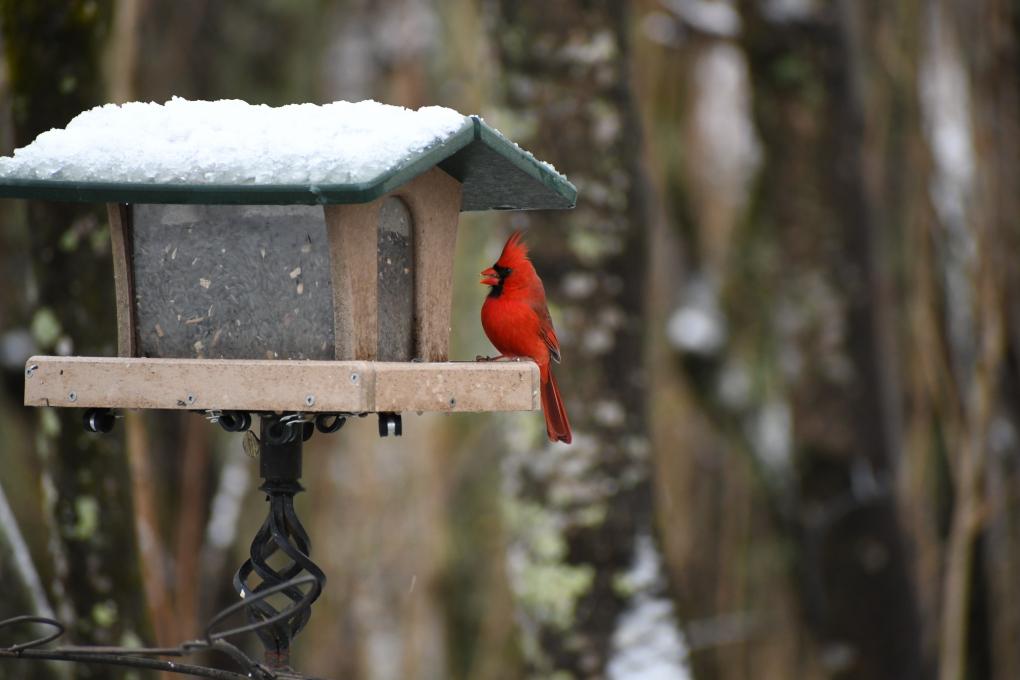 With the Merlin, I like the position of the Merlin facing out from the top of the only
With the Merlin, I like the position of the Merlin facing out from the top of the only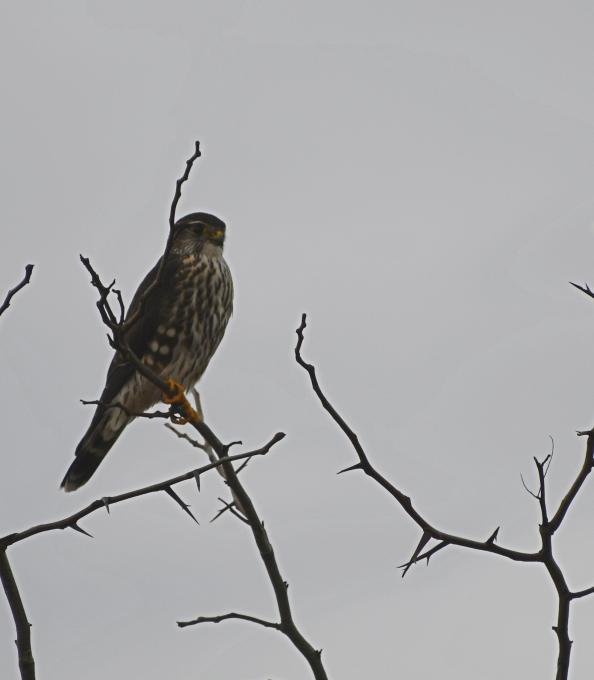 tree with the head turned slightly seeming to scan the area to locate a small bird for dinner. Perhaps a slightly higher position would be even better. I think there is certainly room for improvement in the shot but the eye twinkle is there slightly and I like the artistic appearance of the small limbs surrounding the bird making the setting almost show the violence this small bird is capable of bestowing. The background grey - while realistic - is lacking.
tree with the head turned slightly seeming to scan the area to locate a small bird for dinner. Perhaps a slightly higher position would be even better. I think there is certainly room for improvement in the shot but the eye twinkle is there slightly and I like the artistic appearance of the small limbs surrounding the bird making the setting almost show the violence this small bird is capable of bestowing. The background grey - while realistic - is lacking. 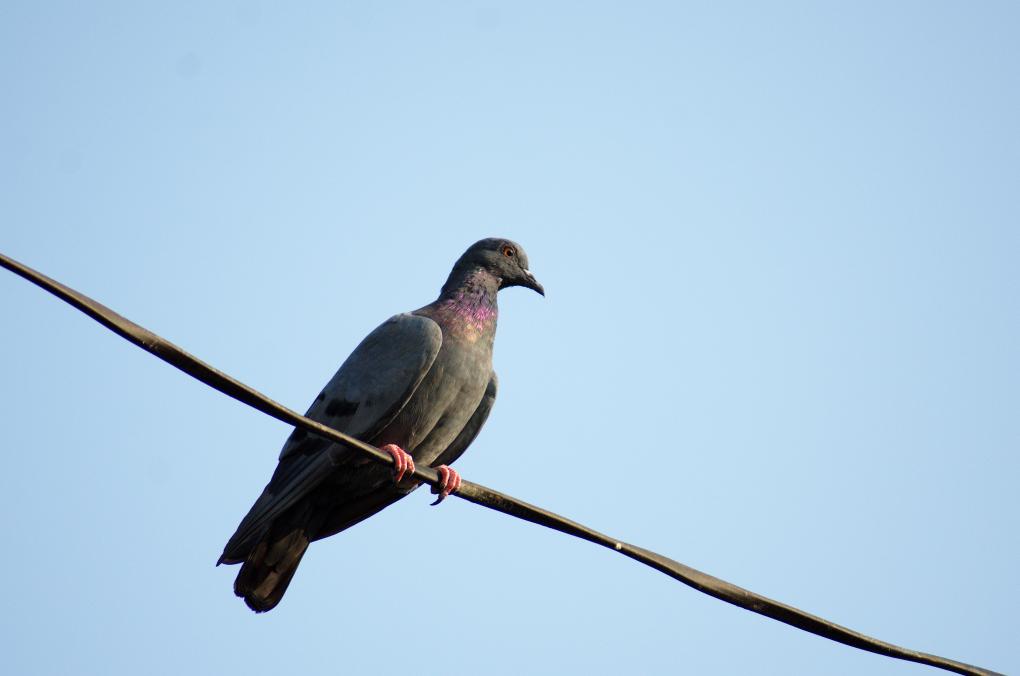 In the following photo the shadow cast by leaves on the breast part of Rose-ringed Parakeet makes it artistic as if a body art
In the following photo the shadow cast by leaves on the breast part of Rose-ringed Parakeet makes it artistic as if a body art
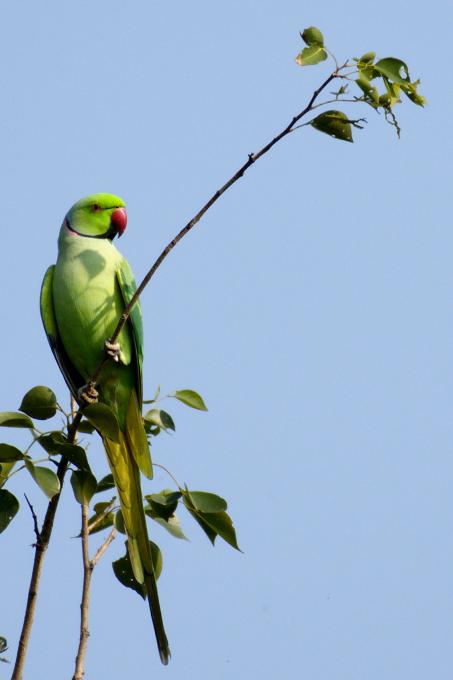 In the following photo the front-top light details the face and breast of this White-throated Fantail
In the following photo the front-top light details the face and breast of this White-throated Fantail
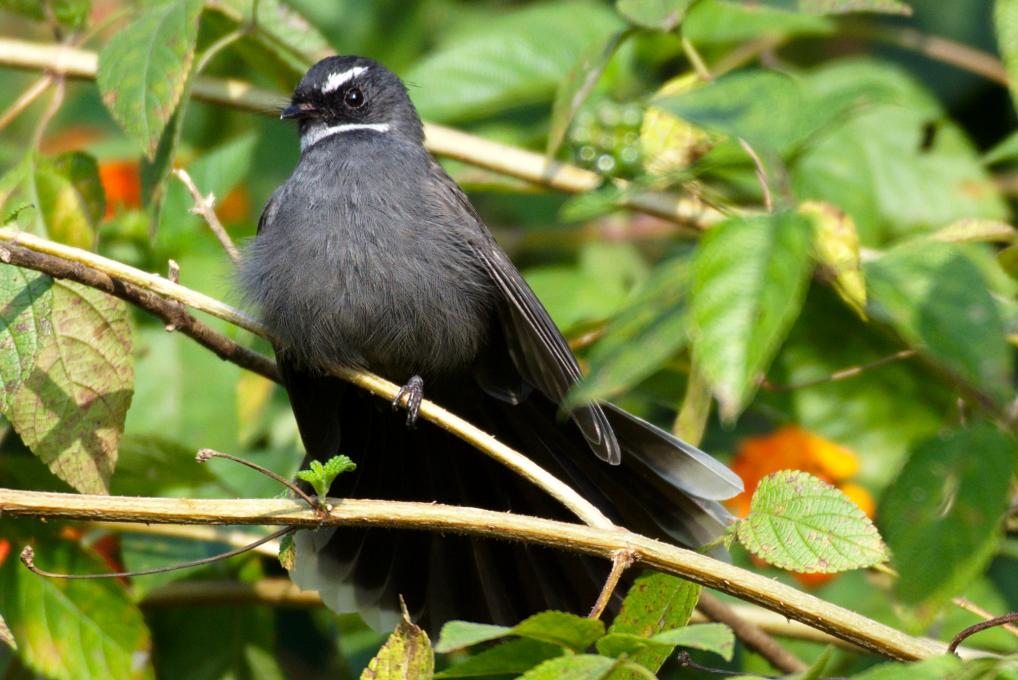
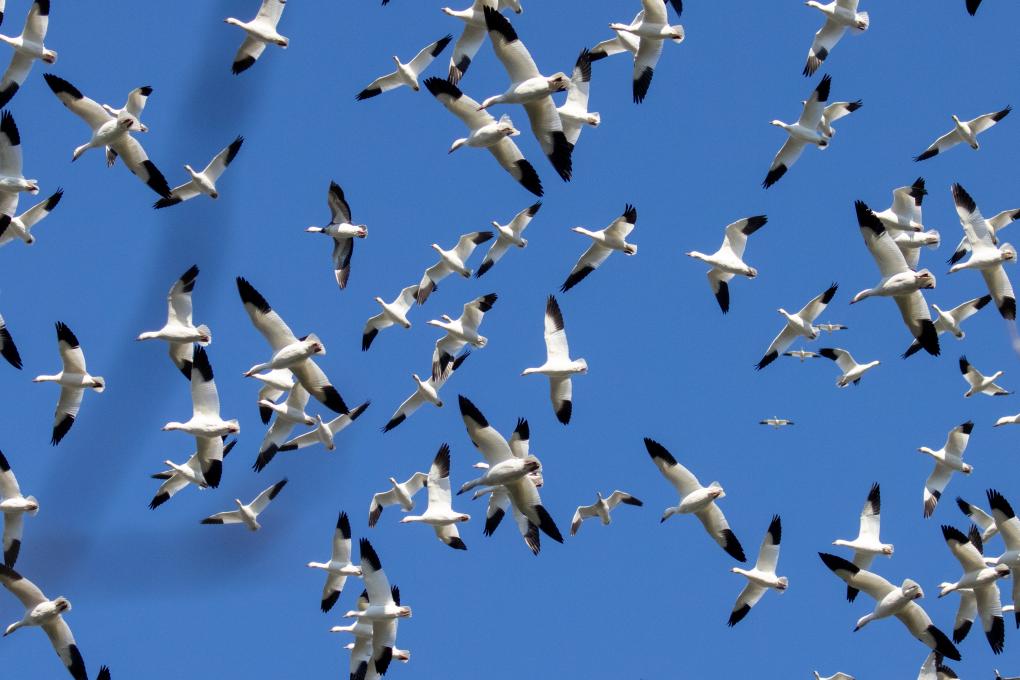 This broke a few rules. The light was harsh and late morning, but the dramatic contrasted black and white of the snow geese is emphasized by the light. In some situations the rule of thirds is difficult to use. The blur is from trees branches in the foreground, which was unavoidable at the time from in the woods.
This broke a few rules. The light was harsh and late morning, but the dramatic contrasted black and white of the snow geese is emphasized by the light. In some situations the rule of thirds is difficult to use. The blur is from trees branches in the foreground, which was unavoidable at the time from in the woods.
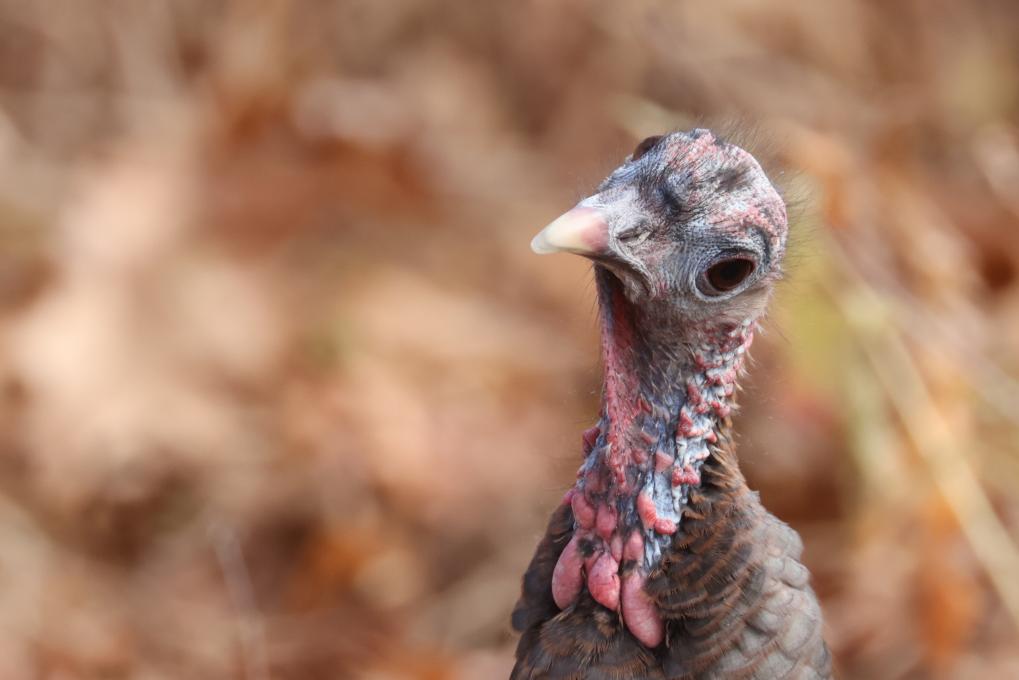 This one had top lighting of the wild turkey and no glint in the eye, but the expression seems to make up for some of the broken rules.
This one had top lighting of the wild turkey and no glint in the eye, but the expression seems to make up for some of the broken rules.
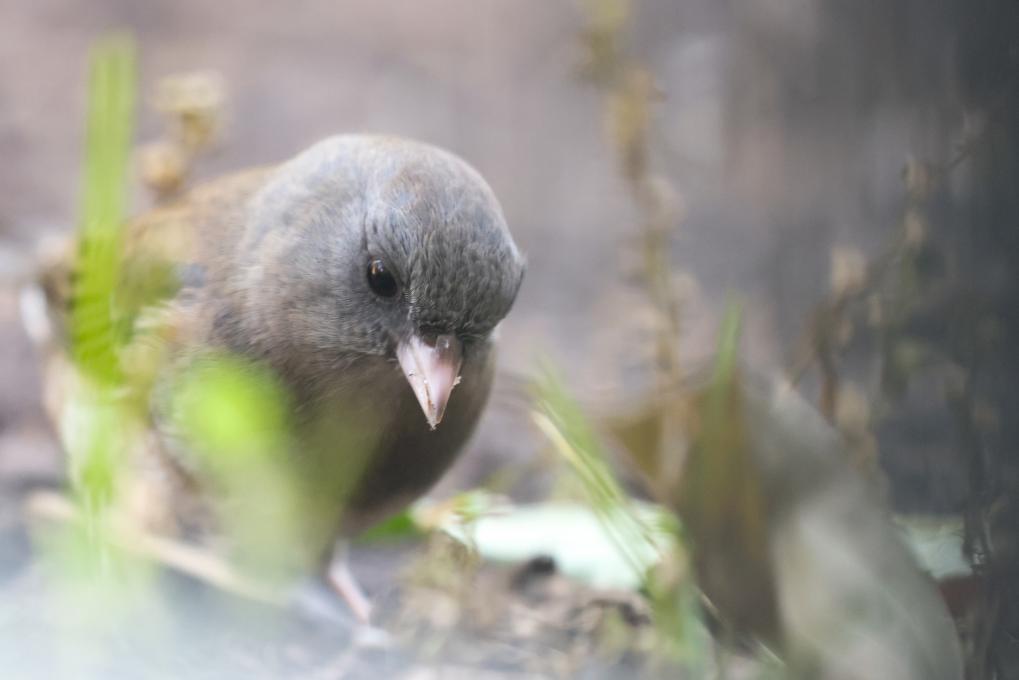 Getting close to the dark-eyed junk makes up for some of the top lighting and almost makes it look like back lighting. The breast of the bird seems to work as the contrasting background for the beak.
Getting close to the dark-eyed junk makes up for some of the top lighting and almost makes it look like back lighting. The breast of the bird seems to work as the contrasting background for the beak.
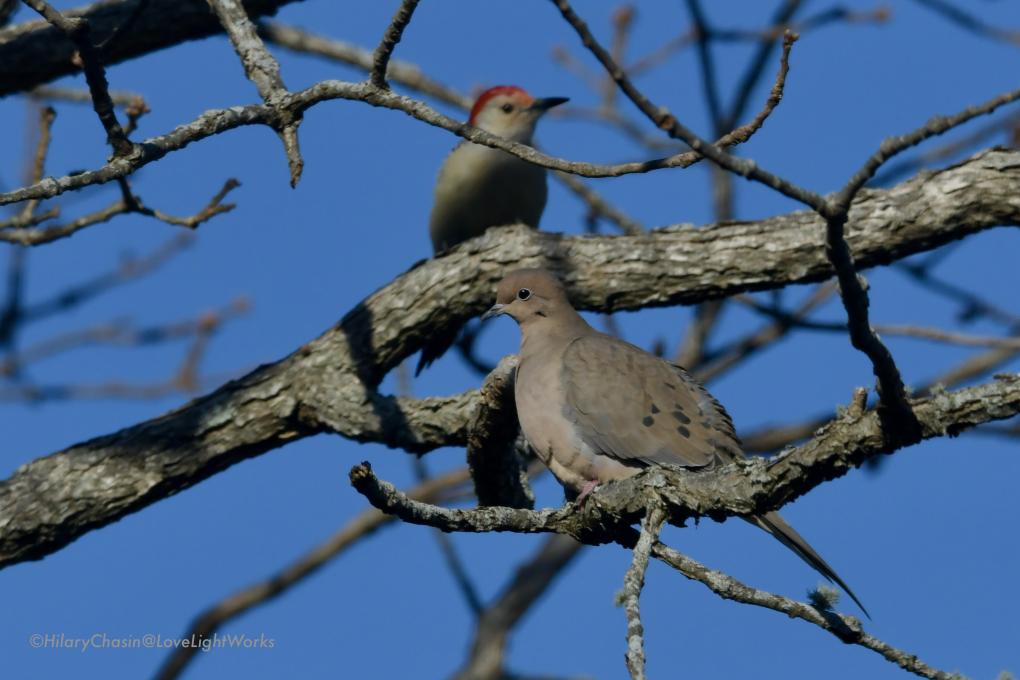 Because these two were looking in opposite directions, I chose to center them in the composition. This choice gives each bird some gazing distance within the frame.
Because these two were looking in opposite directions, I chose to center them in the composition. This choice gives each bird some gazing distance within the frame. 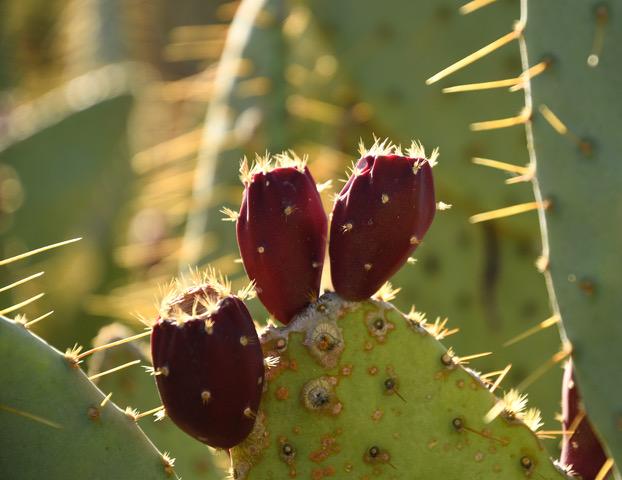
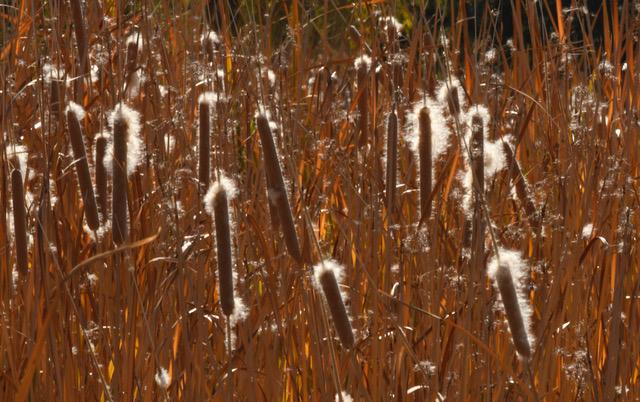
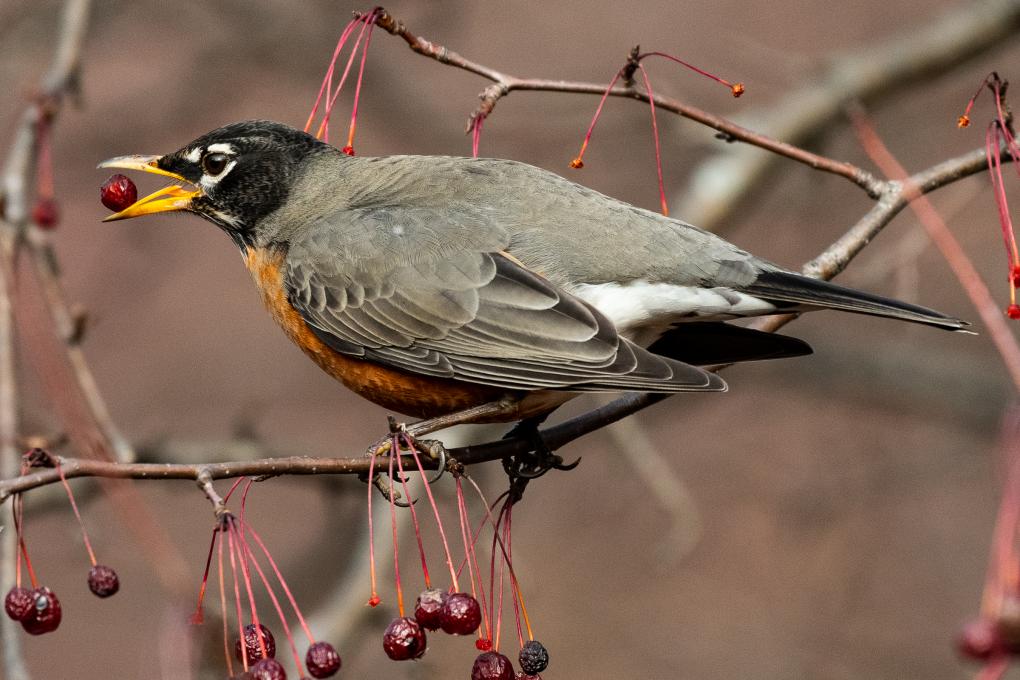
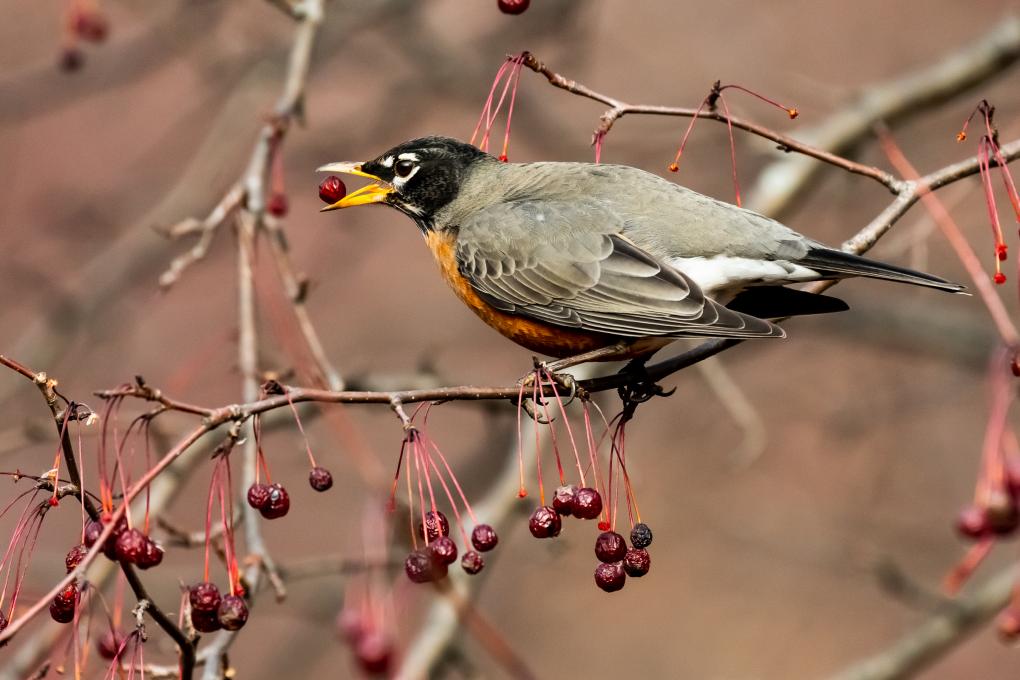
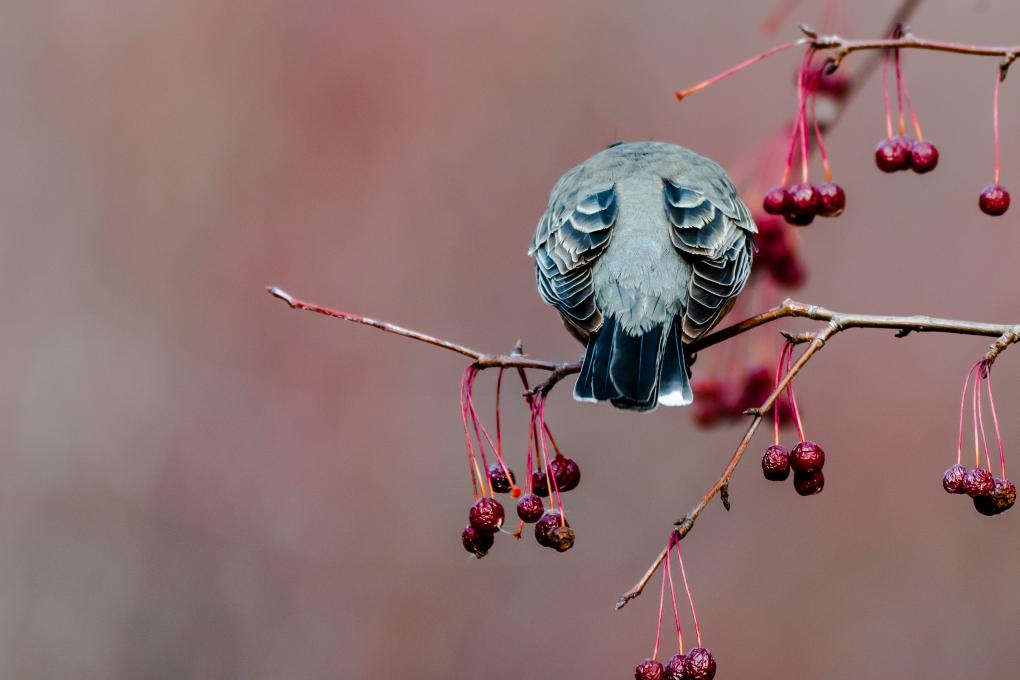
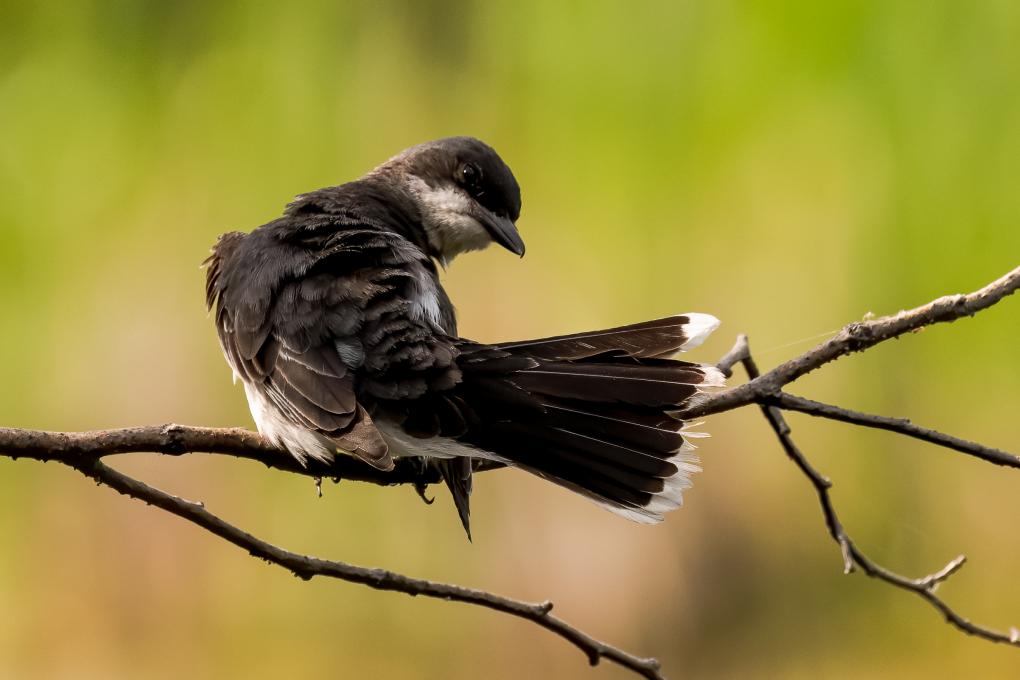
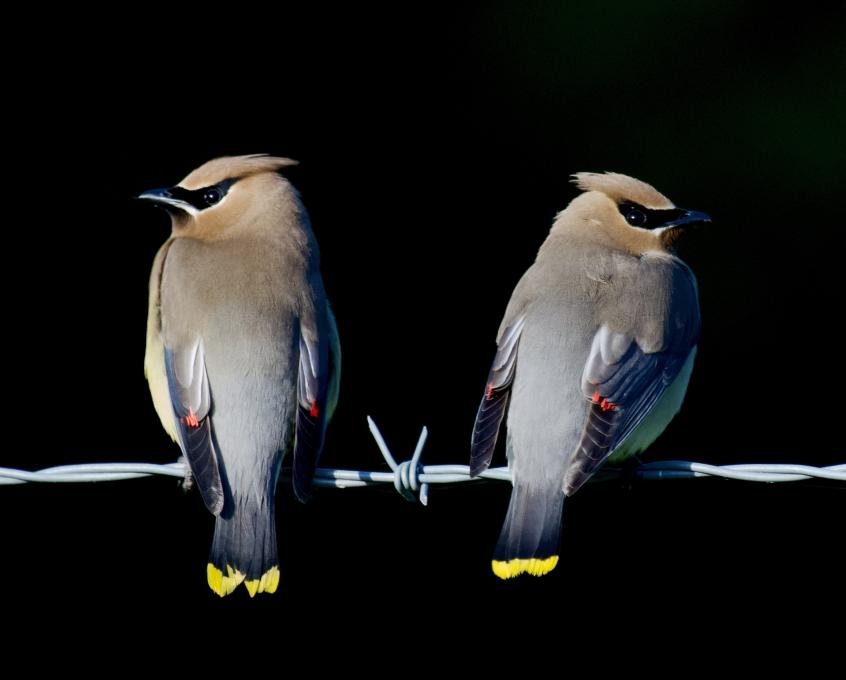 i
i 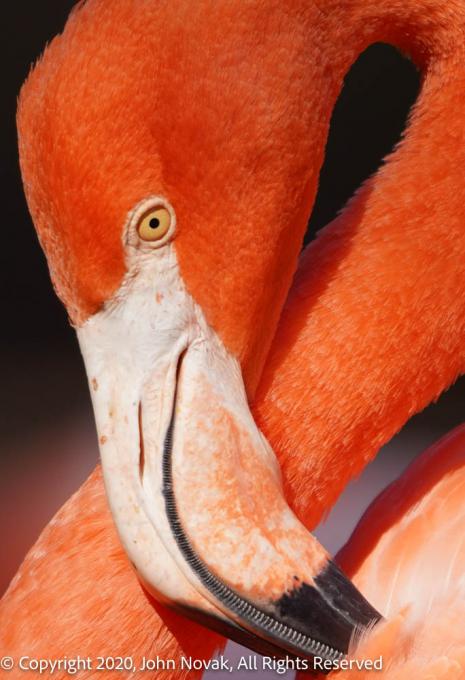 This image is with a super-telephoto at max zoom, 1/500th, ISO 250, f6.3. I find the sinuous neck pose quite visually compelling. The original image is about 9000x6000, with crisp feather detail that is lost with this downsampled upload.
This image is with a super-telephoto at max zoom, 1/500th, ISO 250, f6.3. I find the sinuous neck pose quite visually compelling. The original image is about 9000x6000, with crisp feather detail that is lost with this downsampled upload. 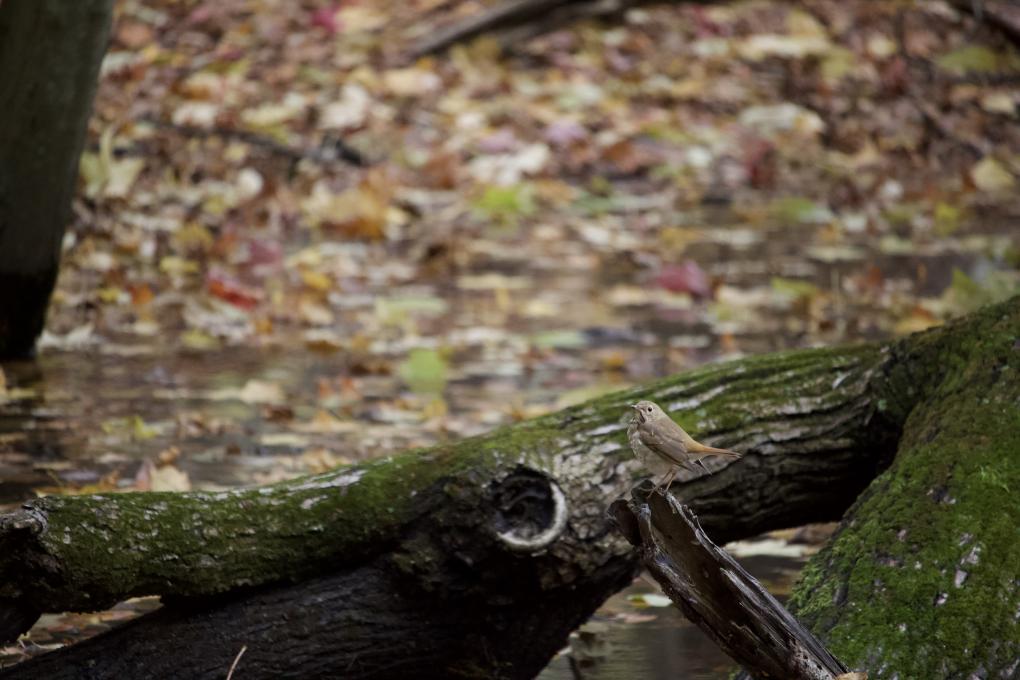
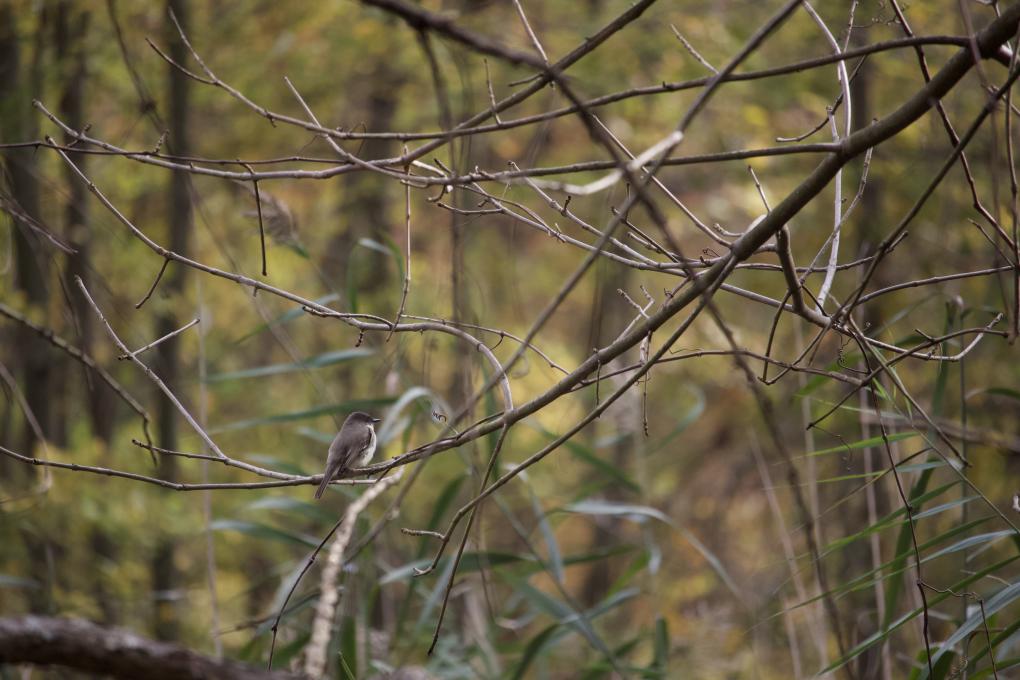
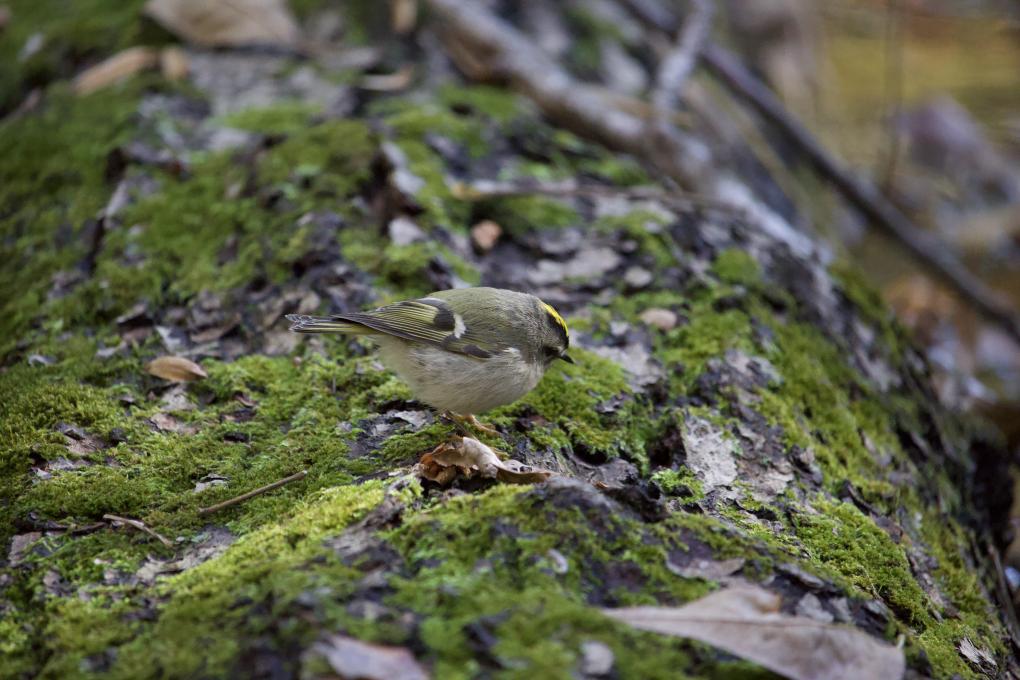 I took all three of these photos at the leather stocking trail in NY and especially like the Golden crowned kinglet, because of how close I got to the bird, with only a 250mm zoom lens! The thrush is also one of my favorite because it is following the rule of thirds.
I took all three of these photos at the leather stocking trail in NY and especially like the Golden crowned kinglet, because of how close I got to the bird, with only a 250mm zoom lens! The thrush is also one of my favorite because it is following the rule of thirds. 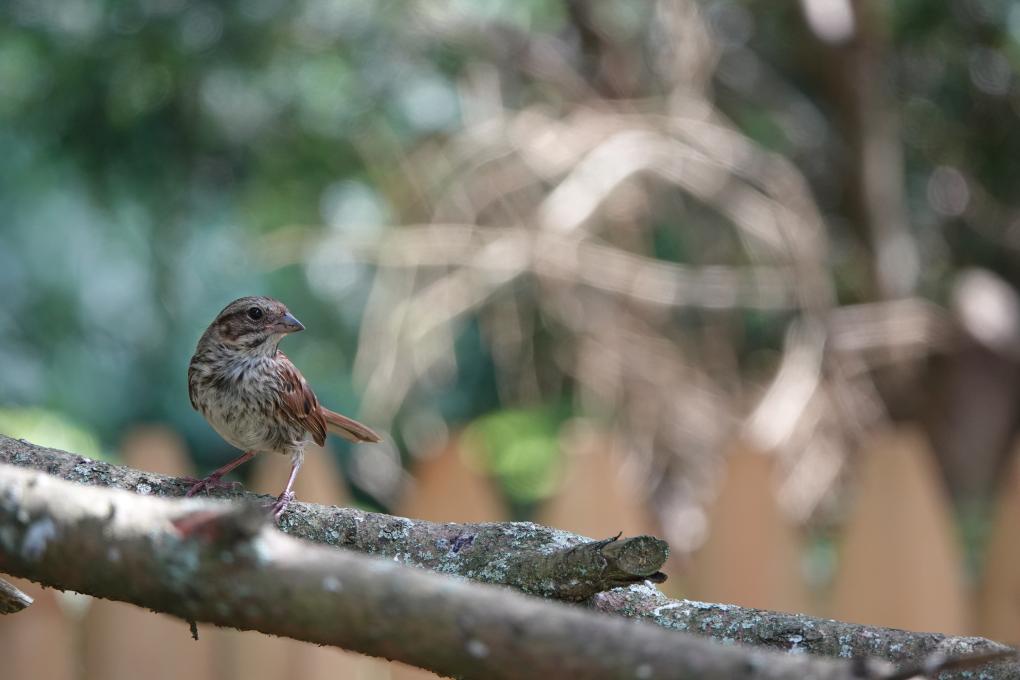
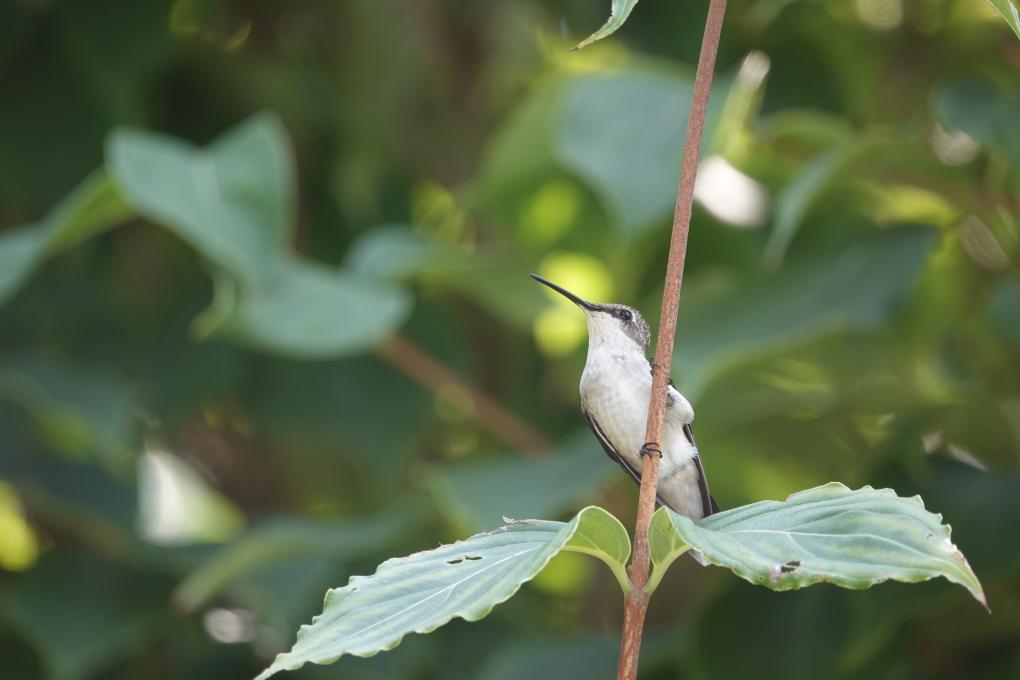
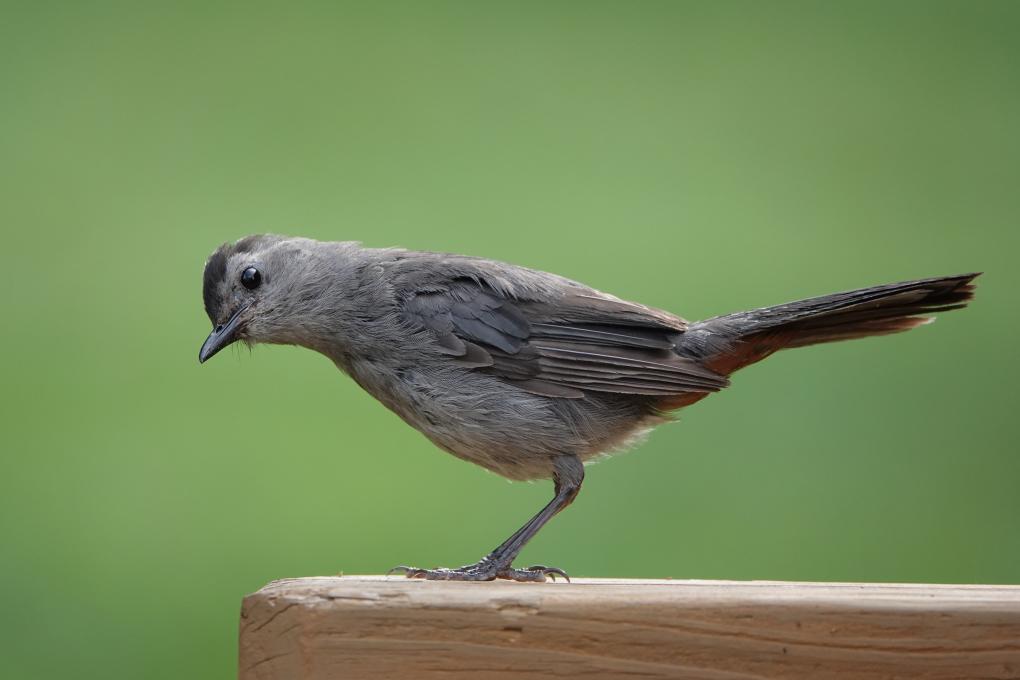 For this assignment I really concentrated on using my manual settings while trying to get the "classic" bird photo using the rule of 3rds. For the Song Sparrow I really liked how the branch in the foreground as well as the background were blurred while the bird itself was still in focus. I spent a lot of time with this female Ruby-throated Hummingbird as she darted back and forth from the feeder to this tree and like how she's wrapped around the tiny branch. I love how the Gray Catbird really stands out from the creamy green background.
For this assignment I really concentrated on using my manual settings while trying to get the "classic" bird photo using the rule of 3rds. For the Song Sparrow I really liked how the branch in the foreground as well as the background were blurred while the bird itself was still in focus. I spent a lot of time with this female Ruby-throated Hummingbird as she darted back and forth from the feeder to this tree and like how she's wrapped around the tiny branch. I love how the Gray Catbird really stands out from the creamy green background. 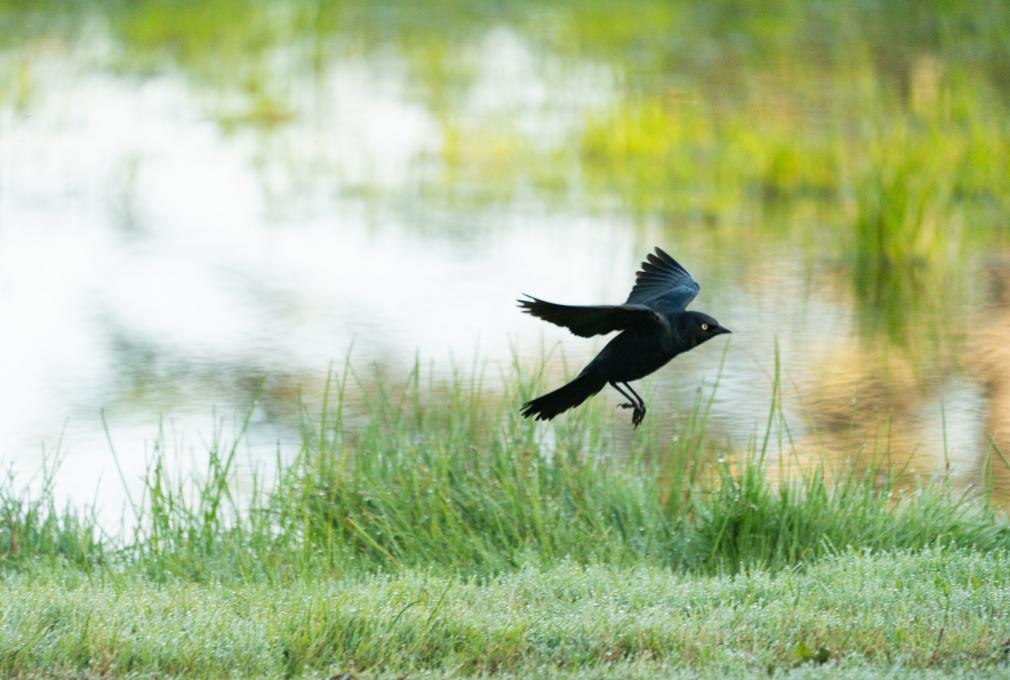 A wide open aperture and high speed created a nicely blurred background while the dew is still visible on the morning grass. Brewers blackbird
A wide open aperture and high speed created a nicely blurred background while the dew is still visible on the morning grass. Brewers blackbird 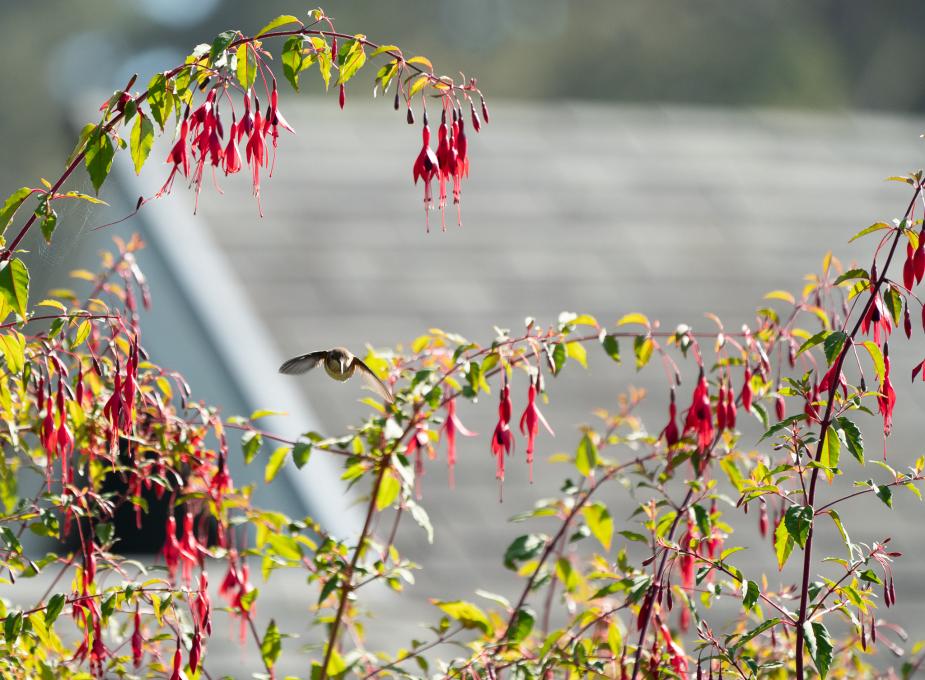
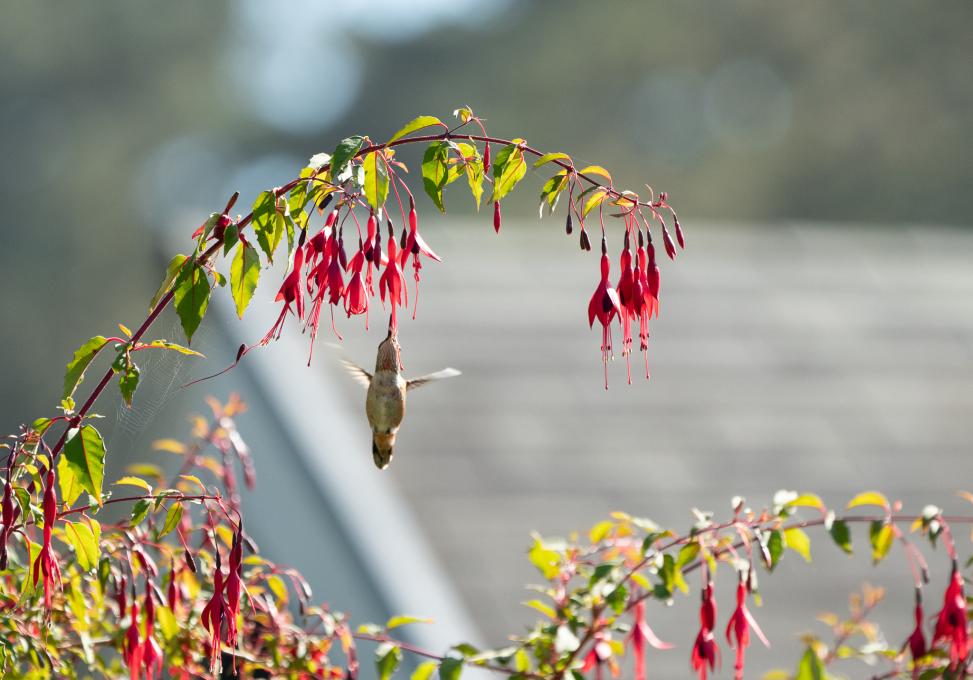 I took these Rufous Hummingbird photos with side lighting. I especially like the way that the fascia frame the bird.
I took these Rufous Hummingbird photos with side lighting. I especially like the way that the fascia frame the bird. 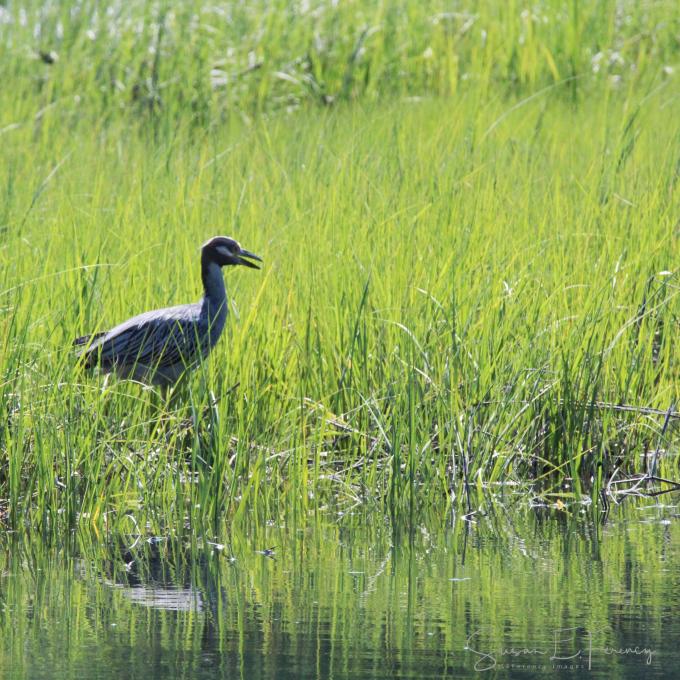
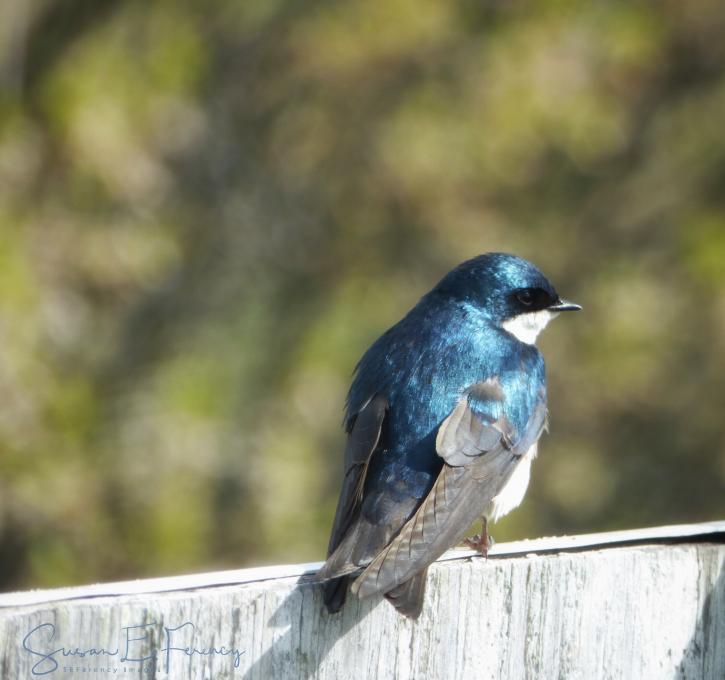
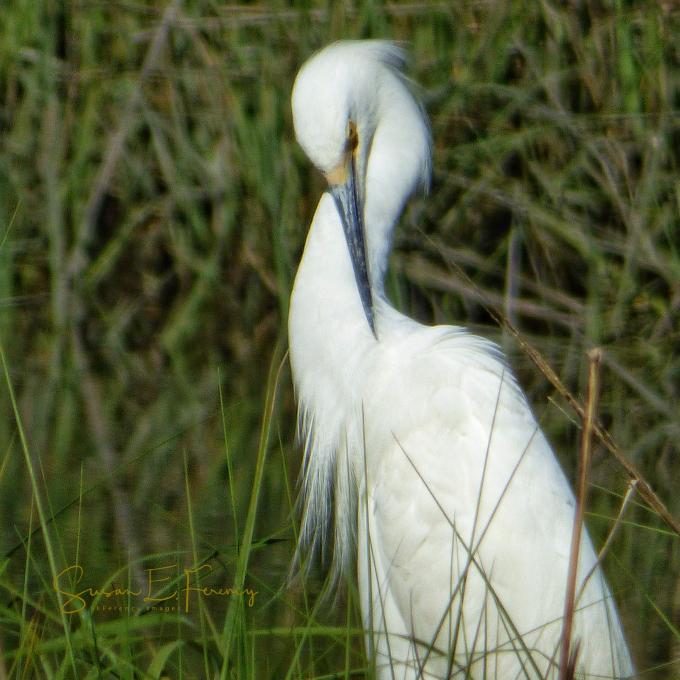 The top photo of a yellow-crowned heron (I think) is backlighting following the rule of thirds. The middle photo of the Tree Swallow is side lighting and follows through rule of thirds. Finally, Snowy Egret is front lighting.
The top photo of a yellow-crowned heron (I think) is backlighting following the rule of thirds. The middle photo of the Tree Swallow is side lighting and follows through rule of thirds. Finally, Snowy Egret is front lighting. 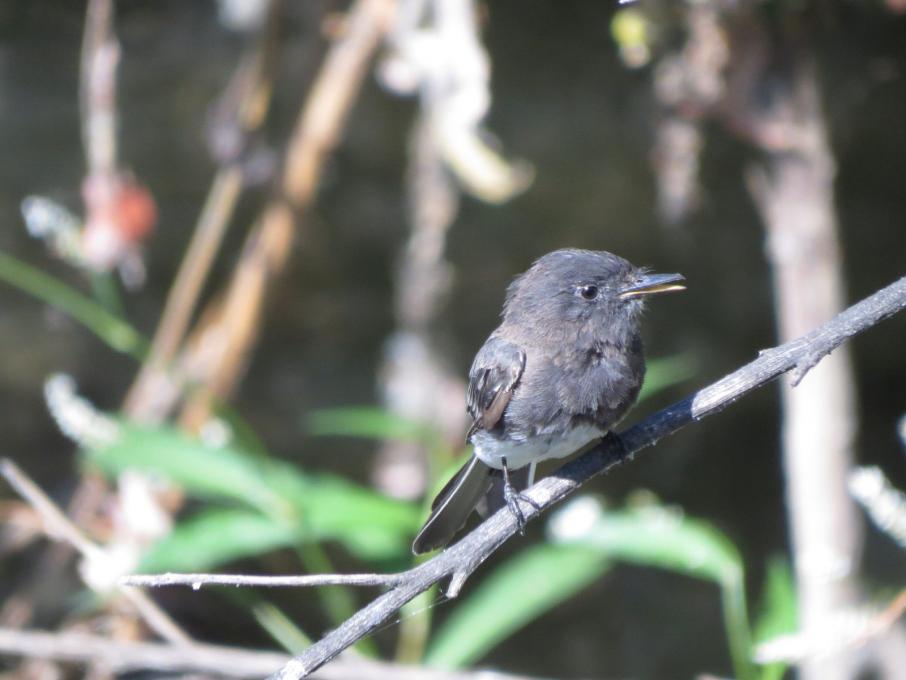
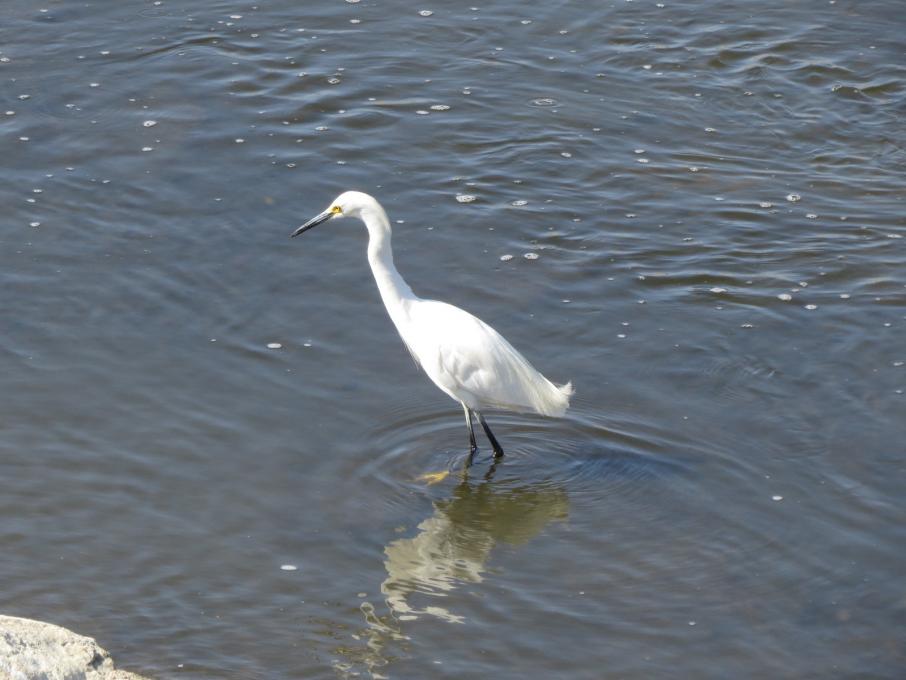
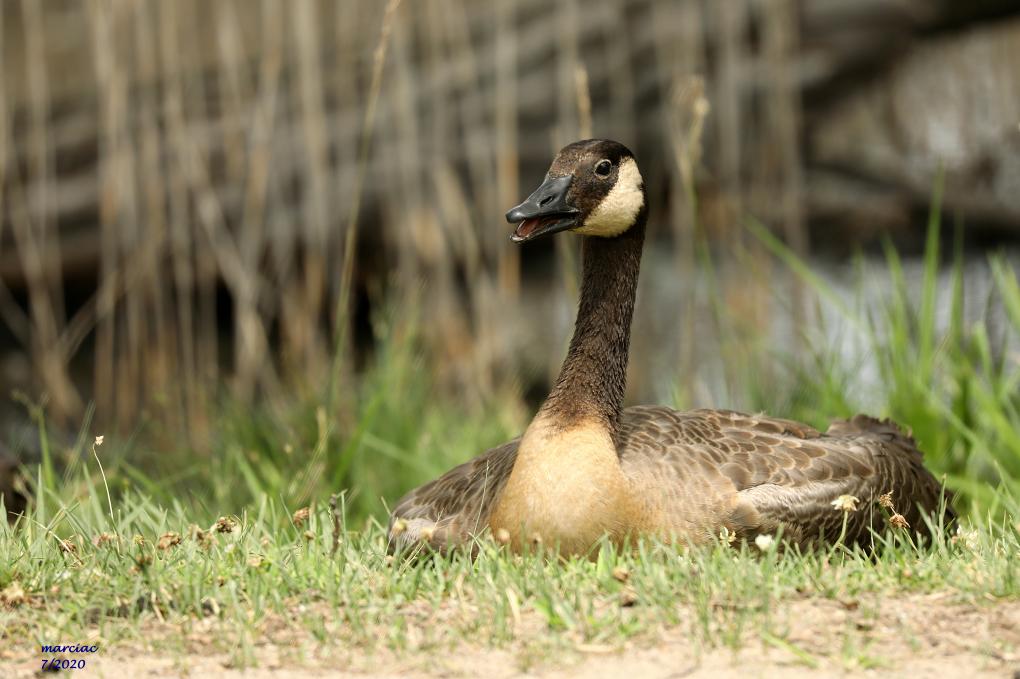
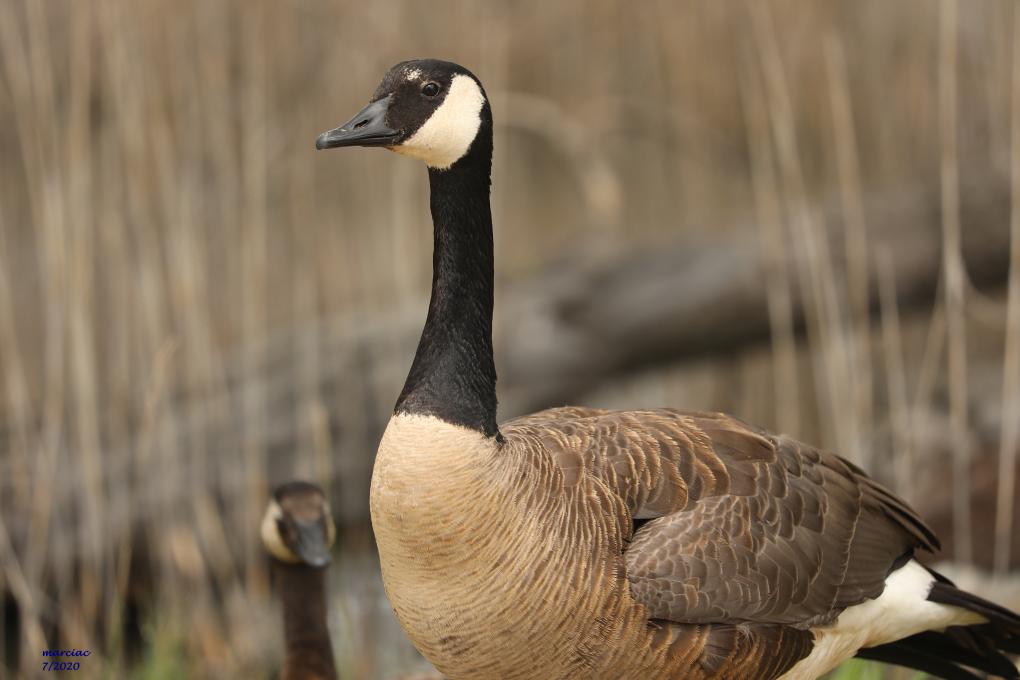
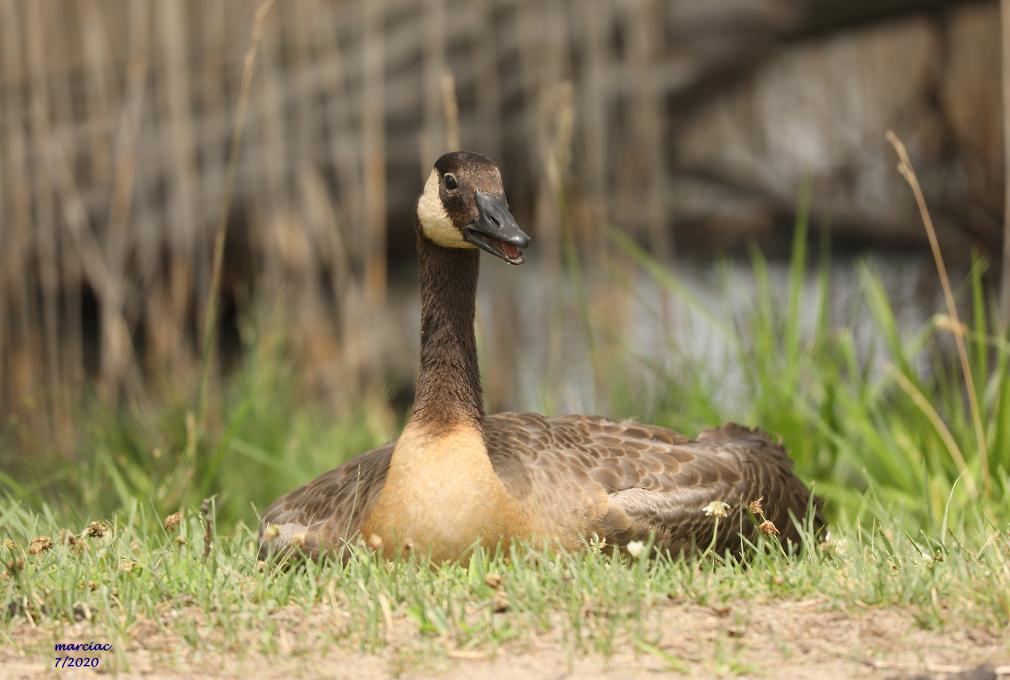
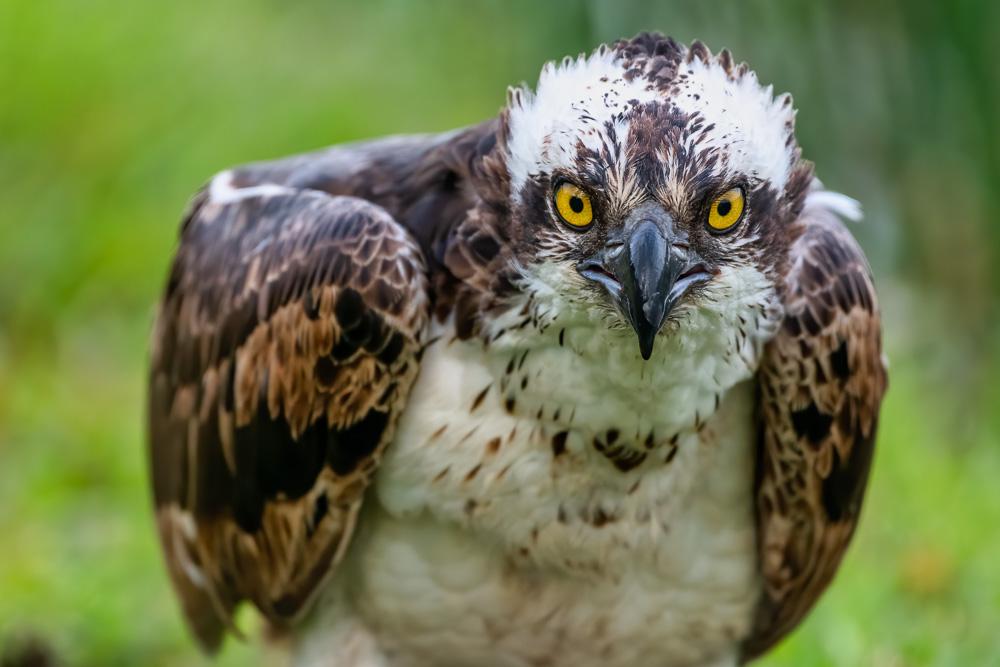
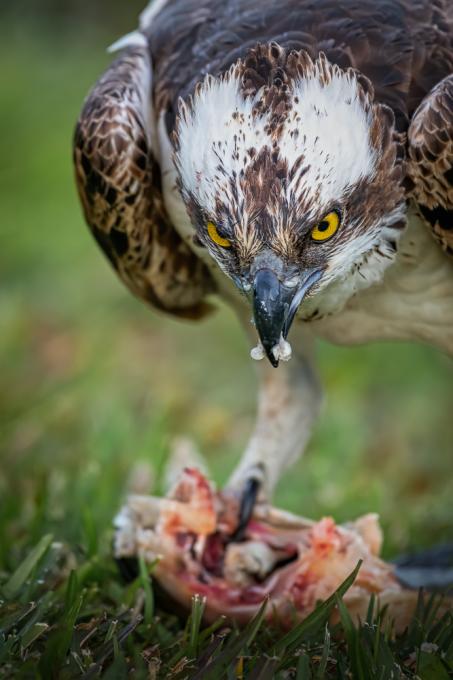
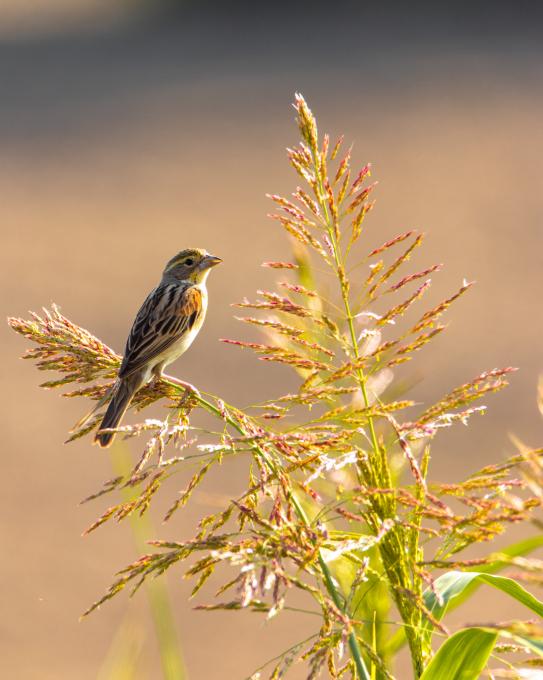 Barn swallow with subject in focus and background blurred
Barn swallow with subject in focus and background blurred
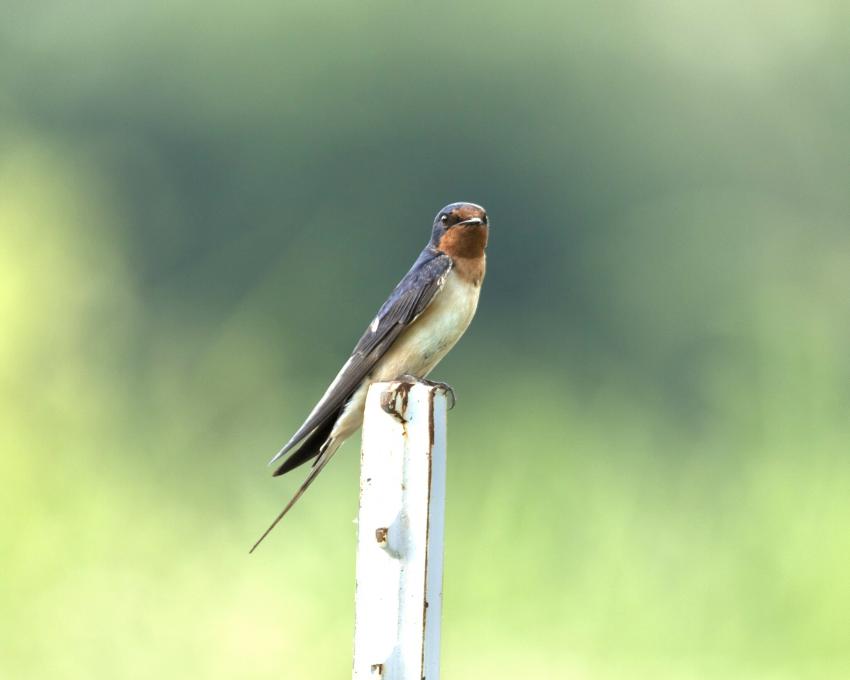 Bald eagle side lighting
Bald eagle side lighting
